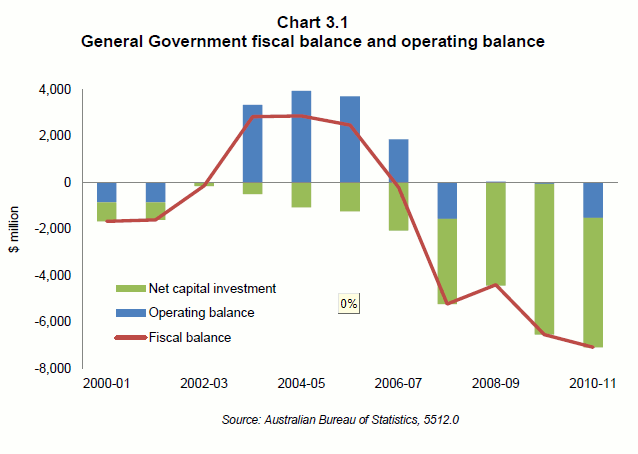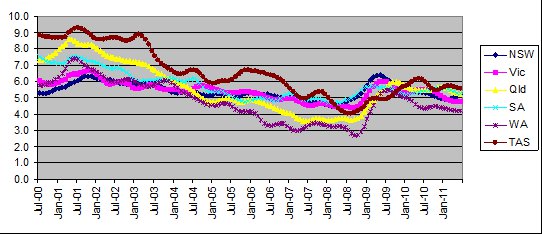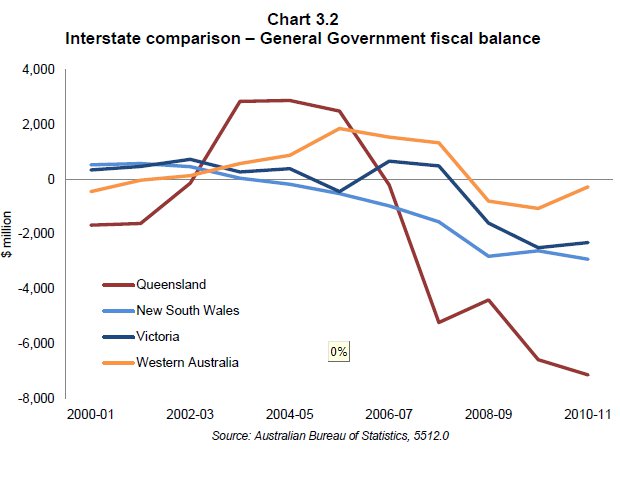I was taken by surprise when Cameron Dick claimed on our last Friday morning meeting on Steve Austin’s ABC 612 morning program that Labor had produced surpluses for 7 of its last 10 budgets. Could this be true?
I disputed the claim, but without conviction. Cameron is a person of substance. I didn’t think he would have made the figure up. But it didn’t square with what I understood the case to be.
Further he asserted, as Labor has been asserting for some time, that the extra expenditure was a response to the global financial crisis.
So I’ve investigated both claims, and Cameron is wrong on the first count. On the second he might be right, but if so, it is one of the more inept and ineffective responses to the GFC.
What’s more, he’s guilty of trying to frame the debate to put a good spin on Labor’s record.
I won’t be backward in challenging next time.
The graph below is from the Costello Commission of Audit. It shows the operating surplus and the fiscal balance between 2000-01 and 2010-11. Note that there is no 10 year period that contains seven surpluses. Added to that, the deficit for the 2011-12 year was forecast at -$4,058,000,000 by the former government, followed by $1,293,000,000 the next year.
Note also that the fiscal balance is much less flattering to the previous government, and that it started deteriorating a year and a quarter before Anna Bligh became Premier of Queensland, but in a period when she was the Treasurer, and then accelerated markedly during her first years, and that her legacy is deficits into the foreseeable future.
Citing performance over the last ten years is like trying to drive forward using your rear view mirror – only reassuring if you don’t know what you are doing.
This graph also demonstrates that Cameron was wrong on his claims about the GFC. As far as most of us are concerned the GFC dates from the crisis at Lehman Brothers which saw it file for bankruptcy on 15 September 2008.
But the big deterioration in the budget occurred before that, and in fact government expenditure in the 2008-09 year was less than the previous year – some stimulus.
Expenditure was higher in 2009-10 and 2010-11, but by this stage the economy had recovered from the GFC.
If the increase in the deficit was meant to deal with the GFC it was incompetently applied.
Not only that, but if it had an effect on unemployment it may well have been negative. The graph below is compiled from ABS data in their series 6202.0.
Queensland entered the GFC with an unemployment rate second only to WA, and it is now vying with the basket case economy of Tasmania for the worst.
Maybe we needed to borrow more? Nope. The graph below shows that Queensland has out-borrowed, by a huge margin, all the other states. You know, the ones with a better performance on unemployment.
So please Cameron, can we stick to the facts next time?



